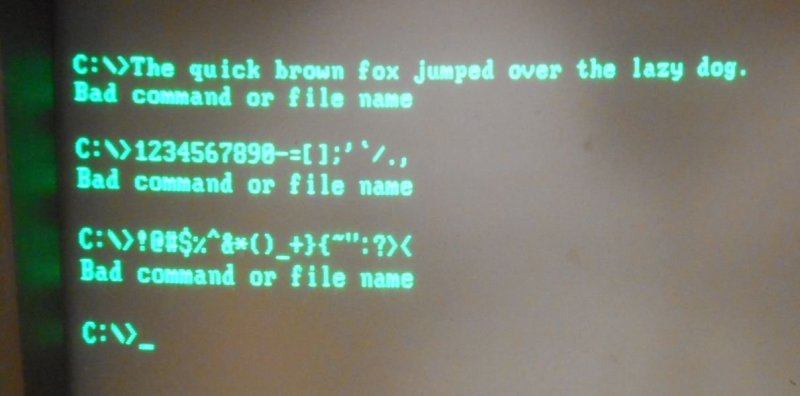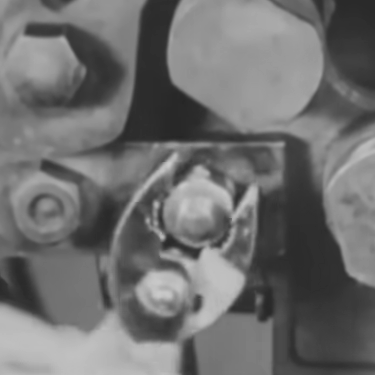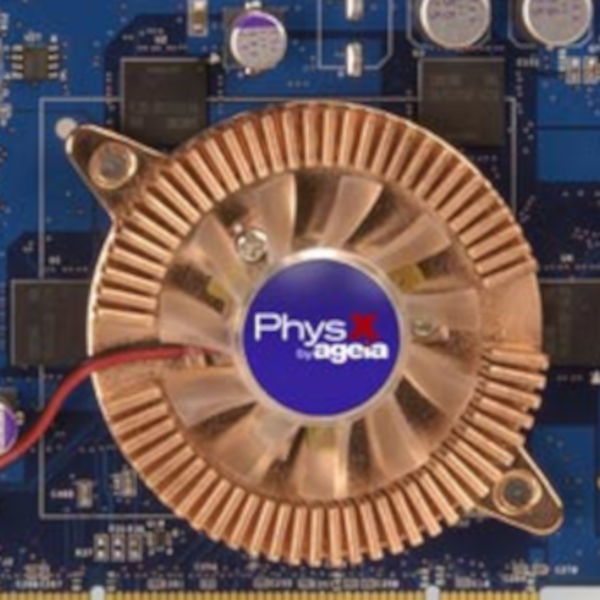After winning an online auction for an 1980s vintage Compaq Portable PC, [leadacid44] discovered why it only cost him $5USD – the keyboard was shot. Not willing to accept having forked out $45USD to ship a brick, he tore into the ancient machine and came up with a found-material solution to the wonky keyboard.
[leadacid44]’s very detailed writeup of the fix for his Compaq includes a thorough examination of the guts of the machine. He got it to boot to MS-DOS 5.0 off of a 20MB ISA hard drive card and began probing the keyboard problem. It turns out the Compaq keyboard has much in common with a modern touchscreen, in that it’s a capacitive keyboard. Unfortunately the foam disks used as springs under each key cap had degraded over the last 30 years, so [leadacid44] began a quest to replace them. After much experimentation and a few false starts, he created a sandwich of transparency film, closed-cell polyethylene foam, and a Mylar antistatic bag. Many discs were punched out with a leather punch and tediously placed in the body of each key switch, and the quick brown fox was soon jumping flawlessly over the lazy dog.
We’ve seen some fixes to these lovable luggables before, like this dumpster queen that became a Hackaday Retro submission. At least [leadacid44]s machine didn’t release the Magic Blue Smoke like that one did.

















Nice job!
add to the list of machines having a keytronics system: DEC computers and terminals in the 70’s and early 80’s, tektronix 4002a, Apple Lisa, Holborn computers. etc. etc. we used foam of 5mm thick and the bag of a bag of chips here in The Netherlands. doublesided tape, and a holepunch of 11mm did the rest. we reused the plastic disks from the old pads as they are a little bit bigger than the 11mm pipe used in a “metric country”
“Jumps” – that way you hit an ‘S’ (and get all of the letters)
It’s ok they added flawlessly into the sentence but well spotted.
I like the quick fox quip, amusingly written.
Please tell me you have read or heard about this sentence before and your post here was just for humor’s sake.
I think you need to warn him about the boundaries of your lawn
Has anyone else had a login popup for http://www.pcinbits.com come up when following the “dumpster queen” link? Seemed to work OK when I cancelled it, but seems decidedly odd.
Nice fix, by the way.
It might be you. I can’t find it.
I can confirm this, it’s due to a picture in a comment ( m1ndtr1p says: August 2, 2014 at 5:16 pm). Just some broken link/picture, no need to worry about.
Authorization Required
What I got when I hit cancel at the prompt:
This server could not verify that you are authorized to access the document requested. Either you supplied the wrong credentials (e.g., bad password), or your browser doesn’t understand how to supply the credentials required.
Additionally, a 401 Authorization Required error was encountered while trying to use an ErrorDocument to handle the request.
Awesome that he got it working, honestly I would’ve been happy paying $50 for that just to have the case/CRT/etc. and reprupose it. :D
I worked with someone who had one of these beasts when it was state of the art. It’s so heavy, someone might want to buy one just for body-building.
This is more of a ‘restoration’ than a ‘repair’. Good job though. The unusual form factor would make it a collectors item.
The 80’s … when everything was made by BRICK Inc.
I can’t place the exact era. I think it’s an IBM XT clone with an equivalent 5MHz 8088 CPU. There were old keyboards from that era that had a ‘XT’ ‘AT’ switch on the bottom that would be useful as a backup.
The XT keyboard followed the key-mapping of the IBM PC Junior and the IBM AT clone had a different key mapping that is still in use today. Apart from the key-map I think the key-up (release) was handled differently. I might have some of this wrong as it’s all a bit vague now.
In any case the protocols are well documented so you could get any old keyboard to work by replacing the micro-controller.
Ha, I used and one of those luggables back in the day (86, I think). Used to skateboard to and from work with it. I can still “feel” the weird dynamics of skating with something that heavy dangling from my shoulder.
The weirdest thing about it was that it didn’t seem that weird at the time ..
ROFL: Well that sums up the 80’s lol
FYI, This is MIGHT applicable to the little bit of foam that is/was inside the 8-track audio tapes.
The foam would turn breakdown into a hydrocarbon sluggy tar/resin even if stored in cool,dark place. Kinda looks like the 8-track tapes had some sort of brown minor nose bleed.
Used to be you could buy replacement foam pads up until about 2011 for the Processor Technology SOL-20 (which I suspect are the same size). When those were no longer available, Geoff Harrison came up with this same method.
http://www.solivant.com/sol20kbd/
I fixed one of these a few months back too. I ended up conformally coating the entire keyboard PCB and using punched mylar disks glued to foam sheets (similar to leadacid44’s approach) under each key. Even through the mylar disks were plastic side down, I found the edge of the disk would short out the capacitive pad unless I used an additional insulator, hence the conformal coating. It does make for the most awesome retro serial terminal imaginable.